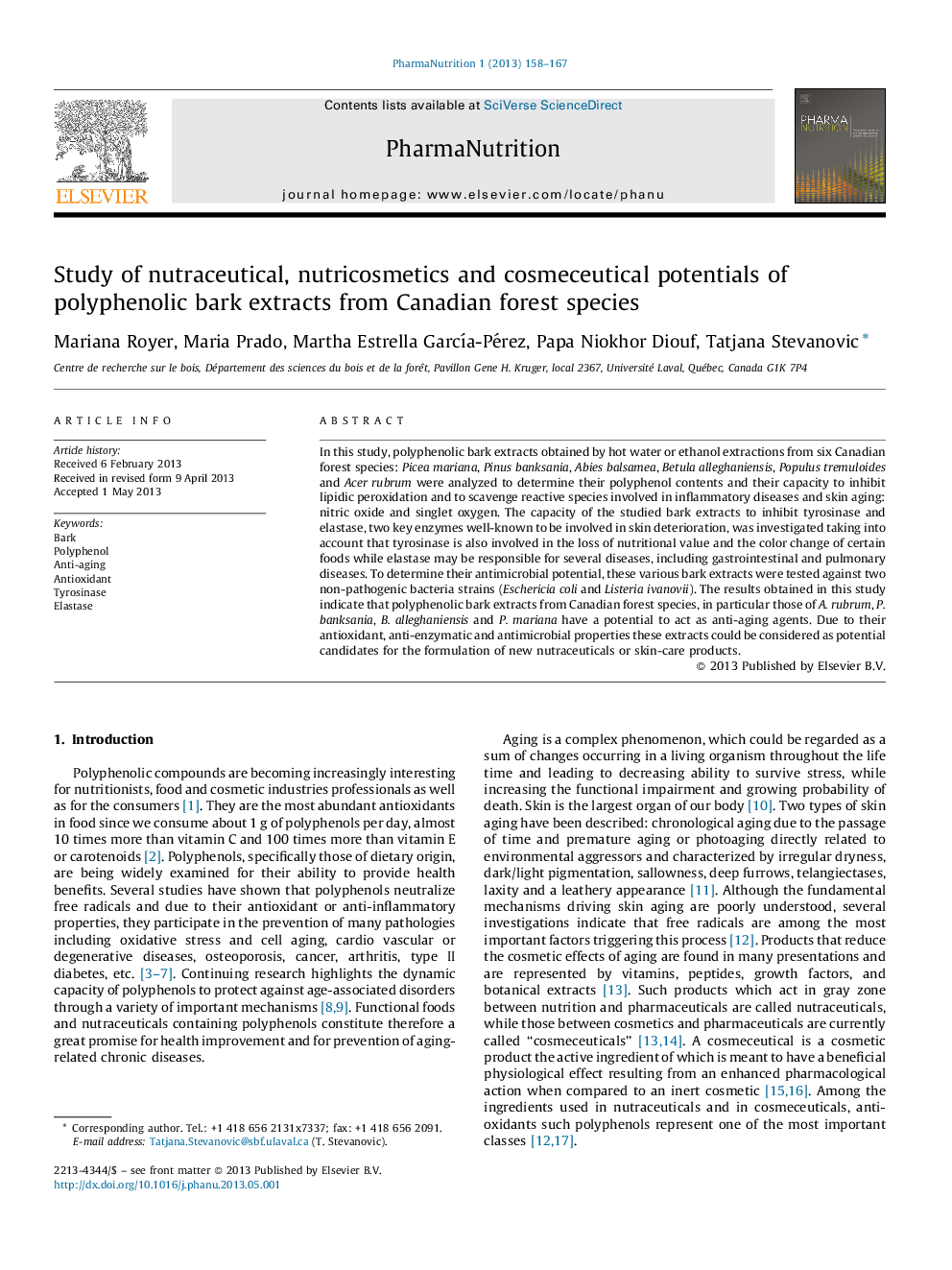| کد مقاله | کد نشریه | سال انتشار | مقاله انگلیسی | نسخه تمام متن |
|---|---|---|---|---|
| 2564568 | 1127981 | 2013 | 10 صفحه PDF | دانلود رایگان |

• Bark extracts studied for the first time have potential for applications in nutraceuticals, nutracosmetics and skin care products.
• The studied extracts could act as anti-aging agents because of their antioxidant and antiradical activities.
• The capacity of these extracts to inhibit enzymes involved in skin aging and in food loss of nutritional value as well as several diseases such as gastrointestinal and pulmonary diseases.
• Red Maple and Jack Pine bark extracts have the broadest spectrum of anti-aging activities and are good candidates for these applications.
In this study, polyphenolic bark extracts obtained by hot water or ethanol extractions from six Canadian forest species: Picea mariana, Pinus banksania, Abies balsamea, Betula alleghaniensis, Populus tremuloides and Acer rubrum were analyzed to determine their polyphenol contents and their capacity to inhibit lipidic peroxidation and to scavenge reactive species involved in inflammatory diseases and skin aging: nitric oxide and singlet oxygen. The capacity of the studied bark extracts to inhibit tyrosinase and elastase, two key enzymes well-known to be involved in skin deterioration, was investigated taking into account that tyrosinase is also involved in the loss of nutritional value and the color change of certain foods while elastase may be responsible for several diseases, including gastrointestinal and pulmonary diseases. To determine their antimicrobial potential, these various bark extracts were tested against two non-pathogenic bacteria strains (Eschericia coli and Listeria ivanovii). The results obtained in this study indicate that polyphenolic bark extracts from Canadian forest species, in particular those of A. rubrum, P. banksania, B. alleghaniensis and P. mariana have a potential to act as anti-aging agents. Due to their antioxidant, anti-enzymatic and antimicrobial properties these extracts could be considered as potential candidates for the formulation of new nutraceuticals or skin-care products.
Figure optionsDownload as PowerPoint slide
Journal: PharmaNutrition - Volume 1, Issue 4, October 2013, Pages 158–167